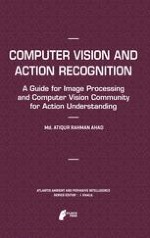Human action analyses and recognition are challenging problems due to large variations in human motion and appearance, camera viewpoint and environment settings. The field of action and activity representation and recognition is relatively old, yet not well-understood by the students and research community. Some important but common motion recognition problems are even now unsolved properly by the computer vision community. However, in the last decade, a number of good approaches are proposed and evaluated subsequently by many researchers. Among those methods, some methods get significant attention from many researchers in the computer vision field due to their better robustness and performance. This book will cover gap of information and materials on comprehensive outlook – through various strategies from the scratch to the state-of-the-art on computer vision regarding action recognition approaches. This book will target the students and researchers who have knowledge on image processing at a basic level and would like to explore more on this area and do research. The step by step methodologies will encourage one to move forward for a comprehensive knowledge on computer vision for recognizing various human actions.
